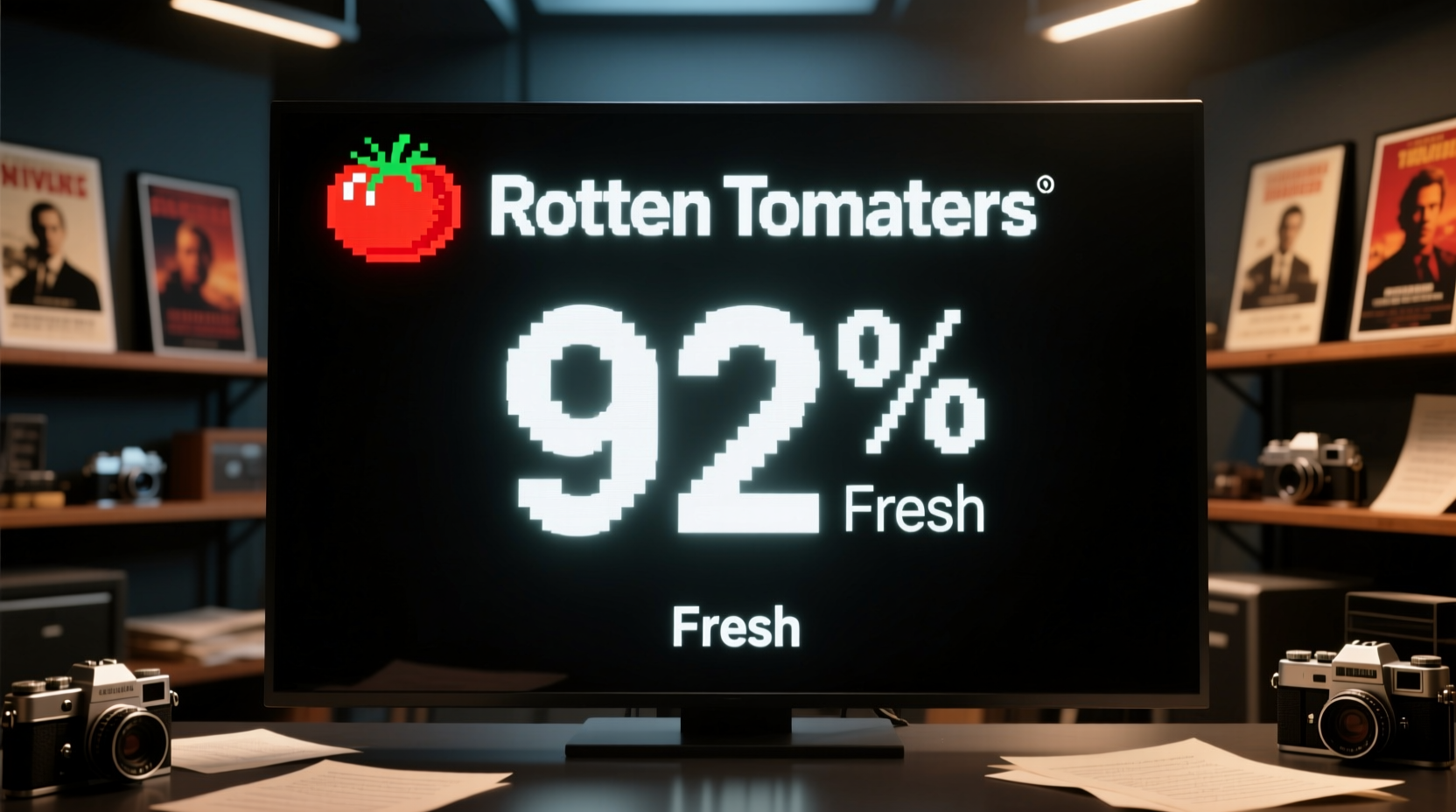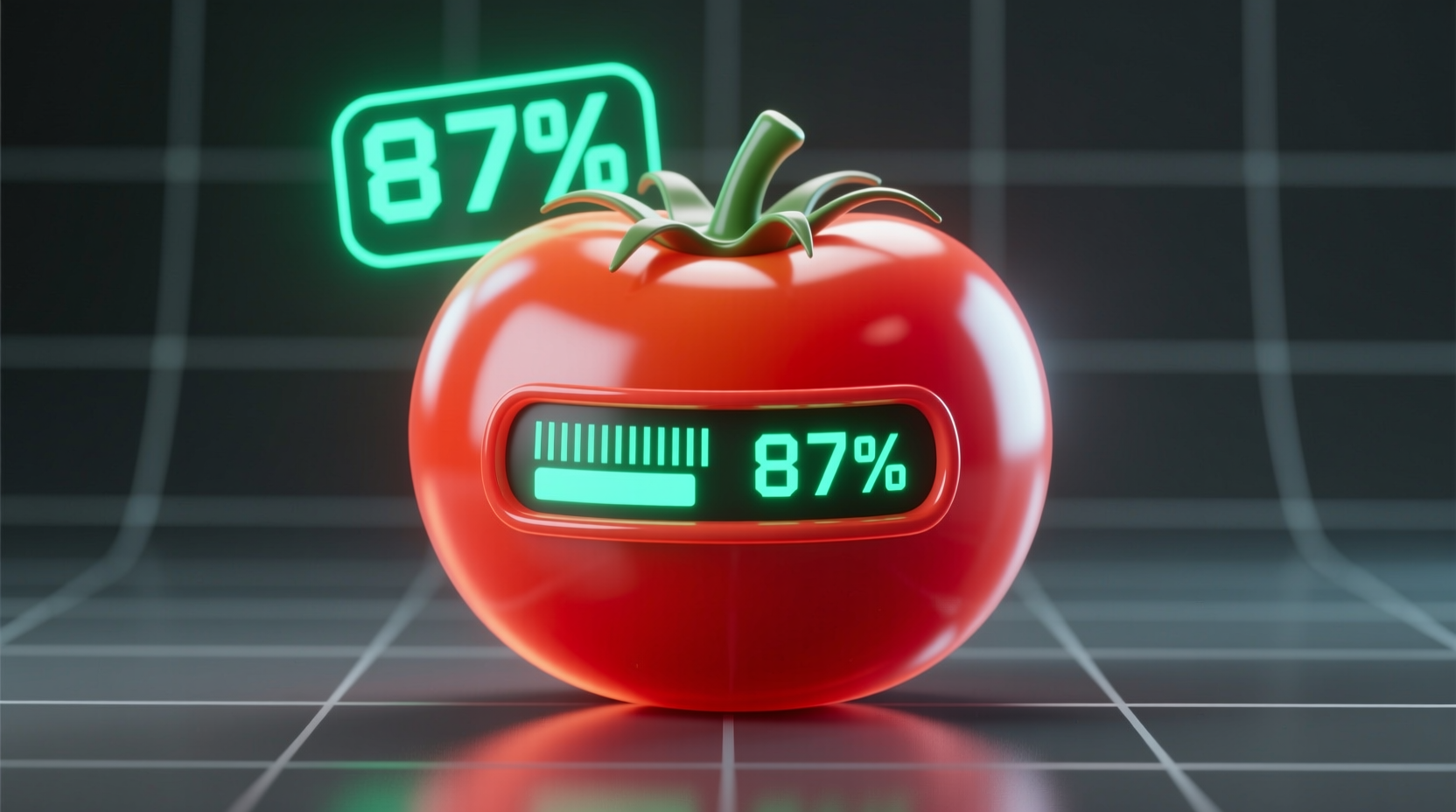Understanding how to interpret Rotten Tomatoes scores can transform your entertainment choices. This guide reveals the methodology behind the Tomatometer, how it differs from audience scores, and practical strategies for using these metrics effectively when deciding what to watch.
What Exactly Is the Tomatometer and How Does It Work?
When you see that distinctive red splat or fresh tomato icon on Rotten Tomatoes, you're looking at the Tomatometer score—a metric that has become synonymous with film and television quality assessment since its introduction in 1998. Unlike simple average ratings, the Tomatometer operates as a binary system: each critic review is classified as either 'Fresh' (positive) or 'Rotten' (negative), regardless of the specific rating given.
The calculation is straightforward: the Tomatometer score represents the percentage of professional critic reviews that are positive. For example, if 70 out of 100 critics give a positive review, the Tomatometer score is 70%. This approach differs significantly from average rating systems like IMDb, where numerical scores are averaged together.
Tomatometer vs. Audience Score: Understanding the Critical Difference
One of the most common points of confusion is the distinction between the Tomatometer score and the audience score. These metrics serve different purposes and are calculated using fundamentally different methodologies:
| Metric | Calculation Method | Minimum Requirements | What It Represents |
|---|---|---|---|
| Tomatometer Score | Percentage of critics giving positive reviews | Minimum 5 critic reviews (40 for wide releases) | Critical consensus among professional reviewers |
| Audience Score | Average of user ratings (1-5 stars) | Minimum 50 user ratings | General audience enjoyment and satisfaction |
This distinction explains why you'll often see significant gaps between critical reception and audience response. Films like Mad Max: Fury Road (97% Tomatometer, 84% audience) demonstrate strong alignment, while others like Justice League (40% Tomatometer, 89% audience) show dramatic divergence.
The Evolution of the Tomatometer: From Simple Counter to Certified Standard
The Tomatometer has evolved significantly since Rotten Tomatoes' founding. Understanding this timeline helps contextualize today's scoring system:
- 1998: Rotten Tomatoes launches with a simple aggregation of reviews from major newspapers
- 2000: Introduction of the Tomatometer as a percentage-based scoring system
- 2003: Implementation of the "Certified Fresh" designation with specific criteria
- 2018: Major methodology update requiring minimum numbers of top critic reviews for Certified Fresh status
- 2020: Expansion to include international critics and non-English language publications
According to Rotten Tomatoes' official methodology documentation, the "Certified Fresh" designation now requires films to maintain a steady Tomatometer score of 75% or higher after a minimum number of reviews (40 for wide releases), with at least 5 reviews from Top Critics. TV seasons require 20 reviews with 14 from Top Critics.
When the Tomatometer Works Best (and When It Doesn't)
The Tomatometer provides valuable insights, but its usefulness varies depending on context. Research from the University of Southern California's Annenberg School for Communication indicates that the Tomatometer correlates strongest with audience satisfaction for certain genres:
- Most reliable for: Documentaries, dramas, and critically acclaimed independent films where critical consensus often aligns with quality
- Less reliable for: Genre films (horror, action, comedy) where critic and audience preferences frequently diverge
- Particularly problematic for: Franchise films where established fan bases may have different expectations than critics
A 2022 study published in the Journal of Media Economics found that the Tomatometer shows the strongest correlation with box office performance during the opening weekend, but this relationship weakens significantly in subsequent weeks as audience word-of-mouth takes over.
How to Use Tomatometer Scores Effectively
Instead of treating the Tomatometer as a simple quality meter, savvy viewers use these strategies:
- Check the sample size: A 90% score based on 10 reviews is less reliable than an 85% score from 200 reviews
- Read the consensus statement: The brief summary captures why critics agree or disagree
- Compare critic and audience scores: Significant gaps warrant investigating why
- Examine individual critic reviews: Look for critics whose tastes align with yours
- Consider the Certified Fresh designation: This indicates sustained critical approval

Common Misconceptions About the Tomatometer
Several persistent myths about the Tomatometer deserve clarification:
- Myth: The percentage represents an average rating (e.g., 80% means 8/10 average)
- Reality: It's the percentage of positive reviews, not an average score
- Myth: A 100% Tomatometer means universal critical acclaim
- Reality: It only means all reviewed critics were positive, which could be just 5 critics
- Myth: The Tomatometer determines a film's financial success
- Reality: While influential, many films with low scores become financial successes through audience appeal
Practical Examples: Interpreting Tomatometer Scores in Context
Consider these real-world examples that demonstrate how to interpret Tomatometer scores effectively:
Example 1: Everything Everywhere All at Once
Tomatometer: 95% | Audience Score: 89%
This alignment between critics and audiences reflects a film that delivers both artistic merit and broad entertainment value. The high Certified Fresh score (requiring 75%+ with minimum critic requirements) confirms sustained critical approval.
Example 2: Black Panther: Wakanda Forever
Tomatometer: 84% | Audience Score: 93%
The significant gap here suggests critics appreciated the film's technical achievements while audiences connected more deeply with its emotional and cultural elements—a pattern common in superhero sequels.
Understanding these nuances transforms the Tomatometer from a simple number into a valuable decision-making tool for entertainment consumption.











 浙公网安备
33010002000092号
浙公网安备
33010002000092号 浙B2-20120091-4
浙B2-20120091-4